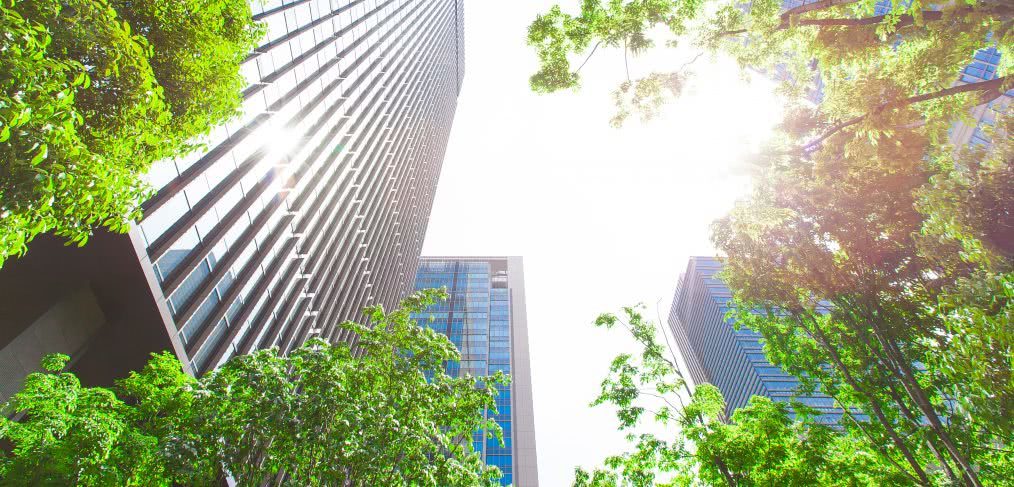
5 Concrete Ways to Begin Reversing Climate Change Today
Did you know that in 2016, humans emitted over 14 million Olympic-sized swimming pools worth of carbon dioxide? Even for those who are well-versed in climate change specifics, this number is staggering. The bottom line is that we’re facing a grave threat to our environment and our well-being.
But it’s not all doom and gloom. There’s a way to turn things around. And it starts with architecture, engineering and design.
In his book, Drawdown, Paul Hawken explores real solutions to climate change. Based on research done by scientists, PhDs, business leaders, policy makers and activists, Hawken presents substantive solutions that can make a dramatic difference in the quality of our environment over the next three decades. I’ve compiled the top five solutions that CallisonRTKL and the rest of our industry can implement today.
- Alternative Transportation
With autonomous vehicles (#82) on the horizon, alternative forms of transportation are dominating much of the urban planning conversation. Electric cars (#26) and their resulting infrastructure, like EV charging stations, are a good first step that could remove 11 gigatons of carbon dioxide from the atmosphere by 2050. For reference, between 2000 and 2015, we released 500 gigatons of carbon dioxide. If we can make these incremental changes, we can put a real dent in the amount of carbon in our atmosphere.
But we must go further. Creating walkable (# 54) and bike-able (#54) cities can reduce that number by another 6 gigatons.
City Planners, what does this mean for you? We need to ditch car-driven designs for plans that focus on location, location, location. If everything is within walking or biking distance, far fewer people would drive. For those who have to, charging stations should be easily accessible.
- New Materials
Engineers and architects, here’s where you come into play.
Making simple changes to the materials that you use or specify in a project can make a lasting environmental impact. Using fly-ash or other cement alternatives (#36), for instance, can help reduce greenhouse gasses by 7.81 gigatons. Specifying smart glass, which can control heat and light intake and block UV rays, will save your clients money and further reduce carbon emissions.
But the number one material that can make a difference is refrigerants (#1). Using better, high-quality refrigerants—or better yet, no refrigerants at all—can remove 90 gigatons of CO2 from the atmosphere by 2050. Yes, you read that right. 90 gigatons.
Recent research has also ushered wood and cross-laminated timber into the building materials spotlight, especially in tall towers. This new technique would have a massive, positive impact on the environment if it were brought into widespread use.
- Buy into Biophilia
I’ve said it once, and I’ll say it again; green is good. There’s a reason that you feel better when you’re surrounded by nature. We can buy into our biophilic nature by promoting green projects that are good for the soul and the earth.
Afforestation (#15) (the creation of a forest or area of trees in a location where there were previously no trees) is one of the best ways to do this. Landscape designers, don’t skimp on the plant coverage on usable land. They provide lovely views, increase productivity and, if implemented, can help reduce atmospheric CO2 by 18 gigatons by 2050.
This is also the case with green roofs (#73), which I consider a triple whammy. They can get rid of almost one gigaton of carbon dioxide while simultaneously creating insulation and reducing storm drainage.
- Live Smart
Awareness is one of the first steps to making big changes in our industry. Of course, a lot of that has to do with a building’s users. But it starts with us.
Smart thermostats (#57), like Nest, and LED lighting (#33) can help residents keep their utilities usage in check with minimal effort on their part. Together, those two small changes can reduce greenhouse gasses by almost 11 gigatons.
For facilities managers, building automation (# 45) and building management systems can simplify the process of monitoring and changing energy usage by a factor of almost 5 gigatons of C02.
- Energize It
One of the most impactful sectors in the reduction of greenhouse gasses is energy—and the best way to reduce CO2 produced by energy usage is to utilize rooftop solar (#10) panels. This one simple change can take 24.6 gigatons of carbon dioxide out of the air.
Strategies like energy storage (#77) using batteries, microgrids (#78) and hybrid buildings help with load shedding and therefore reduce energy consumption. Cogeneration (#50) and district heating (#27) offer consolidated solutions that mean utilities companies don’t have to build more capacity.
The options are here. But as architects, and more importantly, citizens of a warming earth, we need to utilize them. It’s in our hands.

niice will incorporate ideas in my work and life